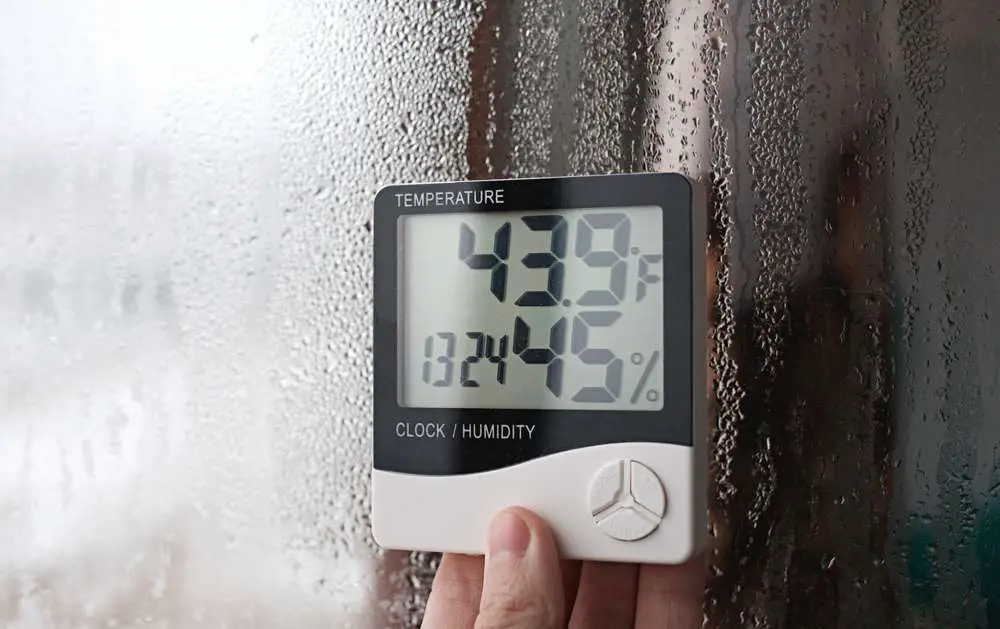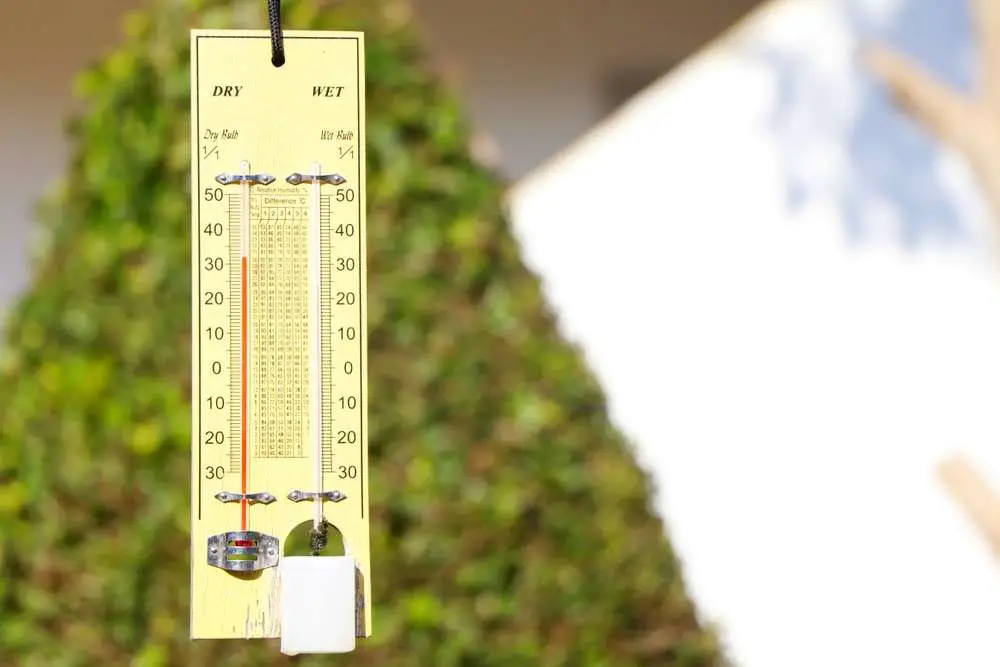- You are here:
- Home »
- Blog »
- Hygrometers »
- 2 Ways For How to Test Humidity Without a Hygrometer
2 Ways For How to Test Humidity Without a Hygrometer

Humidity continues to be a cause of concern for many homeowners. So much so that many have invested in a hygrometer. But not everyone may have access to that device to test humidity, which makes one wonder, are there ways how to test humidity without a hygrometer?
Yes, you can test humidity without a hygrometer. The first way to do that is to conduct a dew-point experiment. This experiment uses condensation to determine if humidity is high or low. The second method is using two thermometers to determine the room temperature against the temperature needed for water to evaporate. The lower the difference between the two means the more humid the room.
We explain the two methods a bit further with a step-by-step guide and more.
Table of contents
What is a hygrometer?
A hygrometer is a device that lets you measure humidity. Humidity is the measurement of the amount of water present in the air.
There are four types of hygrometers:
- Mechanical – a device that uses a spring and hair to determine the moisture present in the air.
- Electric – uses a semiconductor and sensors that absorb water from the air to determine the water present in the air.
- Dew-point – uses a metal mirror that detects the dew point of the water present in the air to determine the moisture it contains.
- Psychrometer – consists of two thermometers, one wet and one dry bulb. It uses temperature and evaporation to determine the moisture present in the air.
People use the device in homes, saunas, museums, and farms. It helps them keep track of humidity.
Why do you need to test for humidity?
Humidity becomes a health concern when it is either high or low. Thus, homeowners use a hygrometer to monitor it.
The recommended humidity level for a home is between 30% and 50%. If it drops below that, you may experience the following symptoms:
- Dry skin and eyes.
- Cold or flu due to the drying of the mucous membrane.
If humidity rises over 50%, you may experience the following symptoms:
- Flu or fever
- Coughing and sneezing
- Shortness of breath
- A severe case of asthma and allergies
When humidity rises, there is extra moisture present in the air, which creates an environment for bacteria, dust mites, and other pollutants to grow. Besides health concerns, high humidity also results in black mold in homes. If you don’t take measures to remove the moisture from your home and treat the mold, it will spread. It will eventually put the structure of your home in danger of collapsing.
2 ways you can measure humidity without a hygrometer
You don’t necessarily need a hygrometer to determine if there is excess water in the air. We highlight 2 ways you can do this. Note that these methods won’t give you the exact humidity levels. But they will help you determine if the levels are high.
Method 1: Determining high humidity levels through the dew-point experiment
For this method, you will need the following:
- A metal can
- Water
- Ice cube
- Thermometer
Here are the steps you’ll want to follow:
- Take the items into the room you want to check humidity for.
- Pour water into the metal can. Fill it up to ⅔ full, leaving room for you to add the ice cubes.
- Add a couple of ice cubes to the can. Stir the water using the thermometer. Then gradually add more ice cubes. You want to do this until the can starts to condense and fog up on the outside.
- Once the can fogs up, put the thermometer in the water to get a reading. The reading you get is the dew point.
So, if the dew point temperature is high, above 50 degrees Fahrenheit (10 degrees Celsius), it means the room is humid. The dew point is the temperature at that water vapor in the air becomes a liquid.
Method 2: Two thermometer test

For this method, you will need:
- A wet-bulb thermometer (if you don’t have one, you can use a normal thermometer and attach a damp cloth or cotton ball to the bulb)
- A dry-bulb thermometer (a normal thermometer)
- A fan
Here are the steps you’ll want to follow:
- Take the items into the room you want to check humidity.
- Place the fan into the room and turn it on.
- Take your 2 thermometers and position them close to the fan. They should be close enough that the air from the fan reaches the thermometer.
- Leave them in place for 5 minutes and then note the reading on each thermometer.
- Calculate the difference in temperature between the 2.
- If the temperature difference is less than 5 degrees, that means that the humidity in the room is over 55%. The higher the difference the less humid the room.
Final thoughts
You don’t necessarily need access to a hygrometer to determine if humidity levels are high in your home. Instead, you can use the two methods we’ve highlighted above to help how to test the humidity without a hygrometer. They won’t give you the exact humidity levels but will help identify if it is high. The best part is that you use common household items for the process so anyone can do it without having to buy anything.
But we’re curious about which method you like better. Which one do you want to try first? Let us know why in the comments below!
About the Author Belal
Belal Rizvi enjoys writing about home improvement and do-it-yourself projects. He is an avid learner of the mold removal and dehumidifiers industry and provides insightful information about it to the readers.
